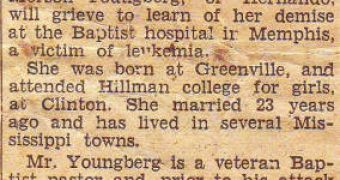New studies, conducted over several decades, seem to suggest that people are now less likely to publish recent photos of the deceased with their obituaries, and that the friends and family would prefer showing a much younger image of their loved ones. Psychologists explain that this is a clear indicator of a growing bias in the world today, especially against old age and its images. The trend can be visible around the world, in obituaries published in wide-circulation newspapers.
Ohio State University (OSU) Assistant Professor of Social Work Keith Anderson said that, “Obituaries and their photographs are one reflection of our society at a particular moment in time.” Anderson is also the co-author of a new paper detailing the finds, published in a recent issue of the Omega-Journal of Death and Dying. The research covers three decades, as experts have analyzed obituaries published from 1967 through 1997.
“In this case, we can get hints about our views on aging and appearance from the photographs chosen for obituaries. Our findings suggest that we were less accepting of aging in the 1990s than we were back in the 60s,” the OSU expert added. According to the results of their investigations, the number of “age-inappropriate” obituaries – those showing photographs that depicted the deceased at least 15 years younger than they were when they died – increased from 16 percent in 1967 to more than 36 percent in 1997. Anderson, who worked together with OSU graduate student Jina Han, shared that the trend had probably continued to that day as well.
“Aging is a double whammy for women, who get hit with more ageism and sexism. Ageism seems to be increasing over time, despite our growing awareness of the issue,” he pinpointed. The research has also determined that, in most cases, it was the wife or the children of the deceased who selected the pictures accompanying the obituaries. “Adult children are thinking they want a picture of Dad when he was at his best – and, especially in the late 1990s, that was significantly younger than we he died. And the discrepancy was even larger for women,” Anderson concluded.

 14 DAY TRIAL //
14 DAY TRIAL //